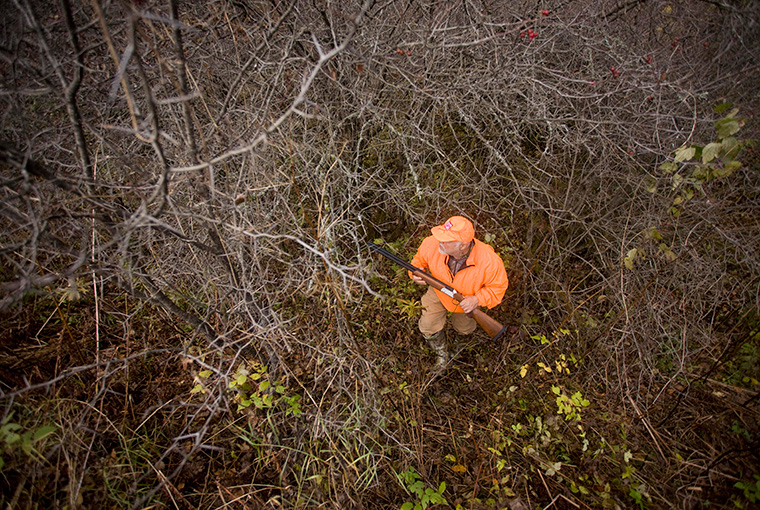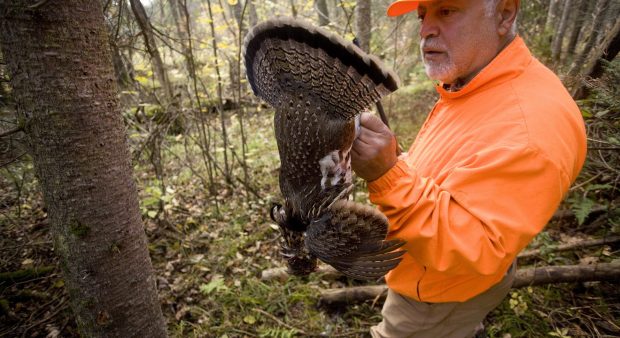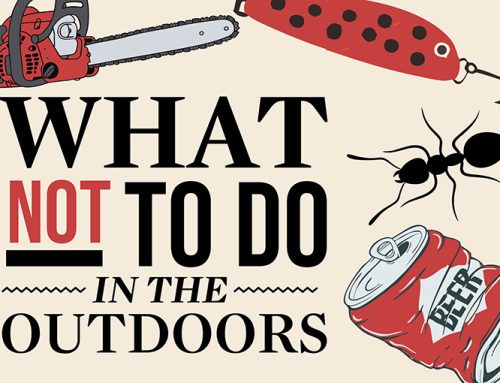
I contorted and twisted myself through the loose maze of alders, ferns, and hawthorns that hugged the riverbed. Each footfall crushed leaves or broke twigs, interrupting peaceful intervals of birdsong and silence. But they also brought me closer to the end of the thicket, where the slow transition from dense emerging cover to sunlit meadow begins.
The patch I was in was less than 30 yards wide and perhaps twice that in length. It was a perfect place for one hunter to push and one of those reliable locations where I rarely failed to put up a grouse or woodcock. It was basically one big finger of edge cover where food, shelter, and concealment could all be had. Thus far, however, there was not a feather to be seen.
Suddenly, that sixth sense took hold. I’m talking about that strange feeling every upland hunter knows well — the one that says, “Get ready. Something is about to happen.”
I scanned the ground ahead, drew my gun to my shoulder, and tried to plant my feet to achieve some steadiness and balance.
That’s when a grouse — 20 feet ahead — sprinted from under a patch of ferns and launched out of the cover’s end and up towards the cloudless autumn sky. I tried to shoot, but there were too many obstacles in the way.
As the noise of the flush subsided, I remained ready hoping beyond all hope, for a second flush that would never come.
I should have been more ready for the first one. For I learned long ago that the end of the cover is where many make-or-break moments happen.
Now or never
When faced with an approaching predator (be it hunter, fox, or dog), a small game animal or upland bird has two options. It can hide or put distance between itself and the threat.
In some cover hiding is easy. Some animals, like woodcock in the alders and varying hare in a winter landscape, excel at it. But there also comes a point when even a well-hidden animal fears imminent discovery.
That’s when they use their feet or wings to put more distance between. Running or moving ahead quietly is often the preferred option, especially when overhead cover, such as hawthorns or wild grape tangles, makes takeoff difficult. (I once saw a grouse try to take off out of a hawthorn patch and get momentarily caught up. I would have shot it, but I had the same problem).
Running is the better option when they are in places where ground cover is good, such as meadows with tall vegetation or fern-covered creek bottoms, especially if flight would expose them to sight and the possibility of avian predators. It makes sense. Why would you risk being seen when the cover you are in provides enough concealment to make it easy to sneak off undetected?
The only reason is the nerve-wracking and unrelenting pressure from a dog or hunter, of course.
The thing is, no matter how far a game bird or small game animal keeps ahead, there comes a time when they reach the end of cover. Then, flushing hard is a pretty good option. For a game bird, that means a thunderous and sudden lunge airborne; to a cottontail, it’s a quick sprint to the next brush pile. To a hunter, it means perhaps the best shot opportunity you are going to get.

The little things
Obviously, if you are hunting with a partner, you should have someone positioned to watch the end of the cover you are pushing. Blocking birds and game animals is perhaps the oldest and most successful strategy we have. We all know that.
But sometimes we forget about the little things that up the odds. For instance, the blocker should always be focused and aware of the progress of the hunter or dog. Hunter orange makes that easier. So too does a dog bell, if used.
This awareness ensures that you will shoot in a safe direction. But it also tells where you should be looking and when to start focusing on that last fringe of cover. As the pusher approaching the end of cover, you might see a grouse, cottontail, or hare, moving into that staging position just prior to the flush.
The blocker should be still and quiet. This is to not to scare the flushing game animal to a route that is not covered.
If a dog is being used, you can watch its behaviour to get into a more advantageous position.
Situational awareness is key
For the hunter pushing the cover, situational awareness is key for those same reasons. A hunter without a dog should move slowly, watch ahead, change directions often, and pause often. The hunter with a dog should keep in contact with it and pay attention to its body language. In either case, the idea is to thoroughly cover the ground in front of you right to the end of cover so any game hiding there feels pressured and flushes.
A flush can happen any time during the push, but to me, each step towards the end of cover increases the suspense and the odds. Pay attention and all that time in the tangles will be worthwhile.

Steve Galea is a full-time outdoor writer and award winning newspaper columnist who lives in Haliburton. He hunts or fishes at least once a week to keep things in perspective.
Reach Steve at: [email protected]
Originally published in the Nov.-Dec. 2021 issue of Ontario OUT of DOORS






Leave A Comment